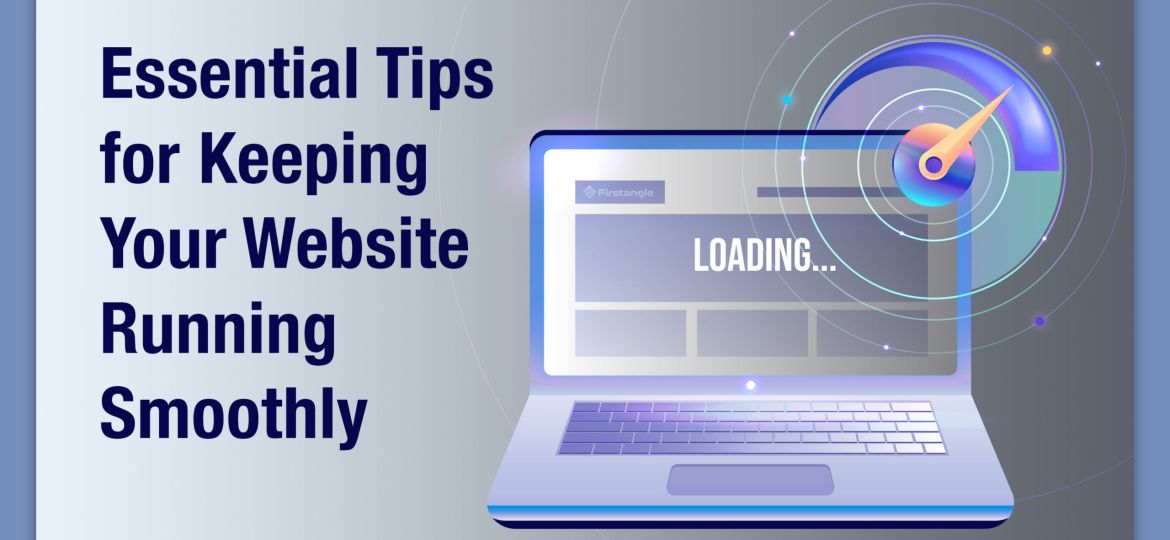
Maintaining a website isn’t just about launching it and forgetting it. Regular upkeep is essential to ensure its smooth operation, optimal performance, and security. In this blog post, we’ll explore some indispensable tips for keeping your website running smoothly.
1. Regularly Update Software and Plugins:
Outdated software and plugins are one of the leading causes of security vulnerabilities and performance issues. Make it a habit to regularly update your website’s content management system (CMS), plugins, and themes to the latest versions. This helps patch any security flaws, improve functionality, and ensure compatibility with the latest web standards.
2. Monitor Website Performance and Loading Speed:
Site speed is crucial for user experience and search engine rankings. Utilize tools like Google PageSpeed Insights or GTmetrix to regularly monitor your website’s performance and loading speed. Address any issues identified, such as large image files, excessive HTTP requests, or server bottlenecks, to ensure optimal loading times.
Check out Importance of Page Speed for User Experience and SEO
3. Backup Your Website Regularly:
Data loss can occur due to various reasons, including hacking, server failures, or human error. Implement a robust backup strategy to regularly back up your website files and databases. Store backups in secure off-site locations or utilize cloud-based backup solutions for added redundancy.
4. Secure Your Website with SSL Certificate:
Protect your website and users’ data by securing it with an SSL (Secure Sockets Layer) certificate. SSL encryption encrypts data transmitted between the user’s browser and your website, preventing unauthorized access or tampering. Regularly confirm that your current SSL hasn’t expired. Additionally, Google prioritizes HTTPS websites in search results, enhancing your site’s visibility and trustworthiness.
5. Optimize Images and Content for Faster Loading Times:
Large image files and bloated content can significantly slow down your website. Optimize images by compressing them without compromising quality (there are a lot of free online tools that can help you achieve this) and minify CSS, JavaScript, and HTML files to reduce file sizes. Additionally, utilize lazy loading techniques to defer off-screen images, improving initial page load times.
6. Check for Broken Links and Fix Them Promptly:
Broken links not only frustrate visitors but also negatively impact your website’s SEO. Regularly scan your website for broken links using tools like Screaming Frog or Google Search Console. Once identified, promptly fix or redirect broken links to relevant pages to maintain a seamless user experience and preserve SEO authority.
7. Implement Security Measures to Prevent Hacking Attempts:
Cybersecurity threats are on the rise, making website security a top priority. Implement robust security measures such as firewalls, malware scanners, and intrusion detection systems to protect your website from hacking attempts, malware infections, and DDoS attacks. Additionally, enforce strong password policies and limit access to sensitive areas of your website.
8. Seek Professional Help for Technical Issues or Updates:
While DIY maintenance is commendable, some tasks require expertise and experience. Don’t hesitate to seek professional help for technical issues, complex updates, or troubleshooting. Web developers, system administrators, and SEO experts can provide valuable insights and support to keep your website running smoothly and this is our specialty at Firstangle.
Conclusion:
Regular website maintenance is not just a good practice; it’s essential for the success of your online presence. By following these essential tips, you can ensure your website remains secure, performs optimally, and provides a seamless experience for your visitors. Invest time and effort into maintaining your website, and it will repay you with increased traffic, engagement, and conversions.
Get in touch with us today if you need help creating or managing your website.

